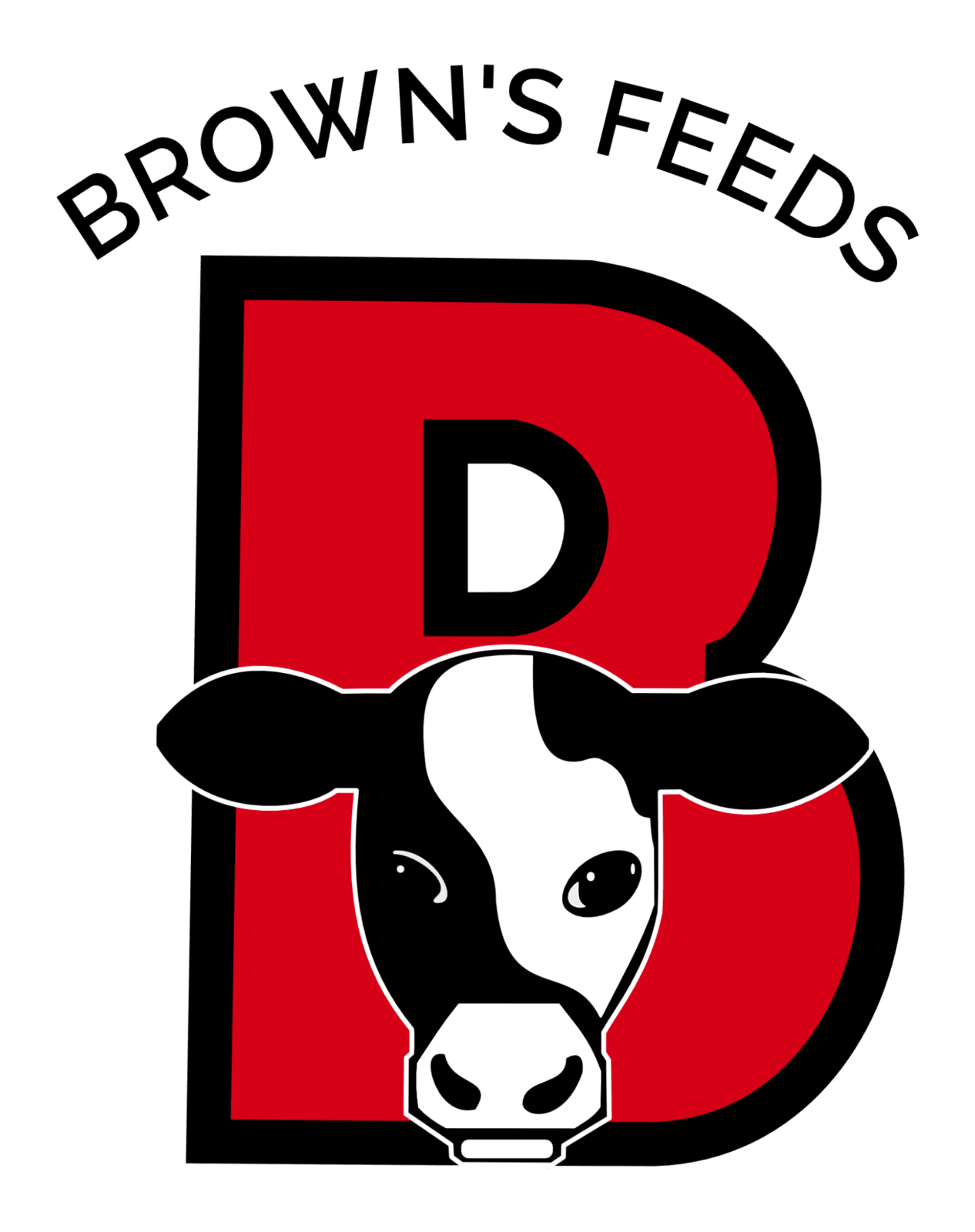
Founded in 1994
Brown's Feeds
Brown's Feeds is a family run business going back two generations. It all started when the Brown family was feeding over 400 calves per day and decided to formulate and produce a milk replacer that best suited our needs. It included innovations like the addition of coconut oil and only using 100% milk proteins. Once the word got out, neighbours and locals wanted to buy our milk replacer and it grew to what it is today!
Brown's Feeds is a proud member of the growing brands manufactured by Hi-Brow Ltd!
Brown's Feeds Milk Replacer

Calf Starter

Calf Grower

Lamb

Foal

Goat

Piglet

Bison

Essential Nutrients
Milk replacer provides essential nutrients to orphaned animals.

Supplement of Maternal Milk
Milk replacer is ideal to act as a supplement in situations where the mother is unable to produce enough milk (e.g. multiple births or first time mothers).


Early Development
The most critical period in an animal's life begins at birth and continues through the early days of development.

Healthy Animal
The desired result is to grow a healthy animal that is well adjusted and able to be weaned at the most cost-effective time. The best way to achieve this goal is to feed high quality milk replacers to your baby animals.
Mixing of Milk Replacer
Milk Replacer to Water Ratio
It is important to mix only enough solution for one feeding whenever possible.
Cow's milk, on average, is 22.5% solids. These solids provide the nutritional component of the milk. Check the label to maintain the proper solids to water ratio. Changing the ratio may lead to scours in the animal.
When changing the amount fed, adjust the total amount fed rather than only the amount of milk powder added. Adjusting the water and milk powder together will maintain the proper solids to water ratio.
Proper Mixing
Ideal temperature for mixing milk powders is 38-39°C and NEVER BOILING. Proper temperature will aid in digestibility of the milk replacer. Mixing in warm or cold water is possible, but does not provide the most digestible final solution.
Powder should mix readily with use of a hand whisk. Mechanical mixing is not recommended.
Mixing Instructions
For maximum usability, milk replacers should be mixed in hot water. 77°C (170°F). All mixing and feeding instructions are on the feed tag.
1. Place 1 L of 77°C water in container.
2. Add 2 cups of powder and mix until dissolved.
3. Add additional water to achieve feeding temperature of 40.5°C and a total of 2 L.
4. Do not over dilute.
Feeding of Milk Replacer
General Weaning Guidelines
Feeding Volume
Feeding volumes should increase steadily for about three to four weeks as per label directions, and then be maintained until the weaning process begins. Volumes can then be reduced to a maintenance level to encourage the intake of dry feeds. The number of feedings can also be reduced as well to help promote intake of other feed as well. Generally two feedings per day should be the minimum until final weaning occurs.
Milk Replacer Ingredients
High quality milk replacers are less likely to cause diarrhea. Animals fed high quality milk replacers are more vigorous and better able to resist disease.
Milk replacers are manufactured primarily from the bi-products of the Dairy industry. The milk replacer formulations may vary in quality and palatability depending on the manufacturer. The quality of milk replacers is directly related to the products used to provide the protein and fat composition. The best protein sources available to baby animals are obtained from 100% milk protein.
The best sources of fat are also milk based in the form of butterfat. However, the cost of using butterfat alone would situate milk replacers in the same cost range as whole milk. Other fat sources have been identified as being highly digestible and suitable replacements to butterfat. The important factor to consider in using alternate fat sources is the digestibility of these products. Milk replacers that use a blend of fat ingredients including butterfat, lard (porcine origin), tallow and highly digestible vegetable fats such as coconut or palm oils are known as blended fats. These blended fats can be 90-95% digestible. Fat sources such as choice lard or non-blended fats are more economical, but are less digestible. Reduced digestibility can be a factor that predisposes an animal to scours.
Milk Protein
- Skim Milk
- Butter Milk
- Dried Whey
- Whey Protein Concentrate
- Casein
- Delactosed Whey
Non-Milk Proteins
- Soy Flour
- Soy Protein Concentrate
- Soy Protein Isolate
- Dried Eggs
- Fish Protein
- Flour Products
Milk Replacer Storage & Handling
Milk Replacer Storage & Handling
Storage and handling is key to ensure proper shelf life of milk replacer. Listed are a number of key point to keep in mind when storing and handling any milk replacer.
Store in a cool, dry and clean location. Unused powders can be refigerated or frozen to help preserve shelf life.
Store away from any chemicals or odours. Milk replacers will pick up these odours from the environment, reducing palatability.
Opened bags should be used as soon as possible. When stored, they should be placed in a tightly closed container to prevent other animals or insects getting into the powder.
Use the oldest product first to promote freshness.
Any remaining mixed milk should be stored using refrigeration. It can then be warmed for feeding later. Reconstituted milk should not be kept for more than 24 hours before feeding.
Milk Replacer & BSE
Milk replacers that use 100% Milk Proteins don't have any "Ruminant Protein Sources" in them. Producers can be confident that feeding milk replacers will not spread BSE. The use of animal fats such as pork based lard compounds are approved feed ingredients, which are highly refined and are not associated with BSE infection.
